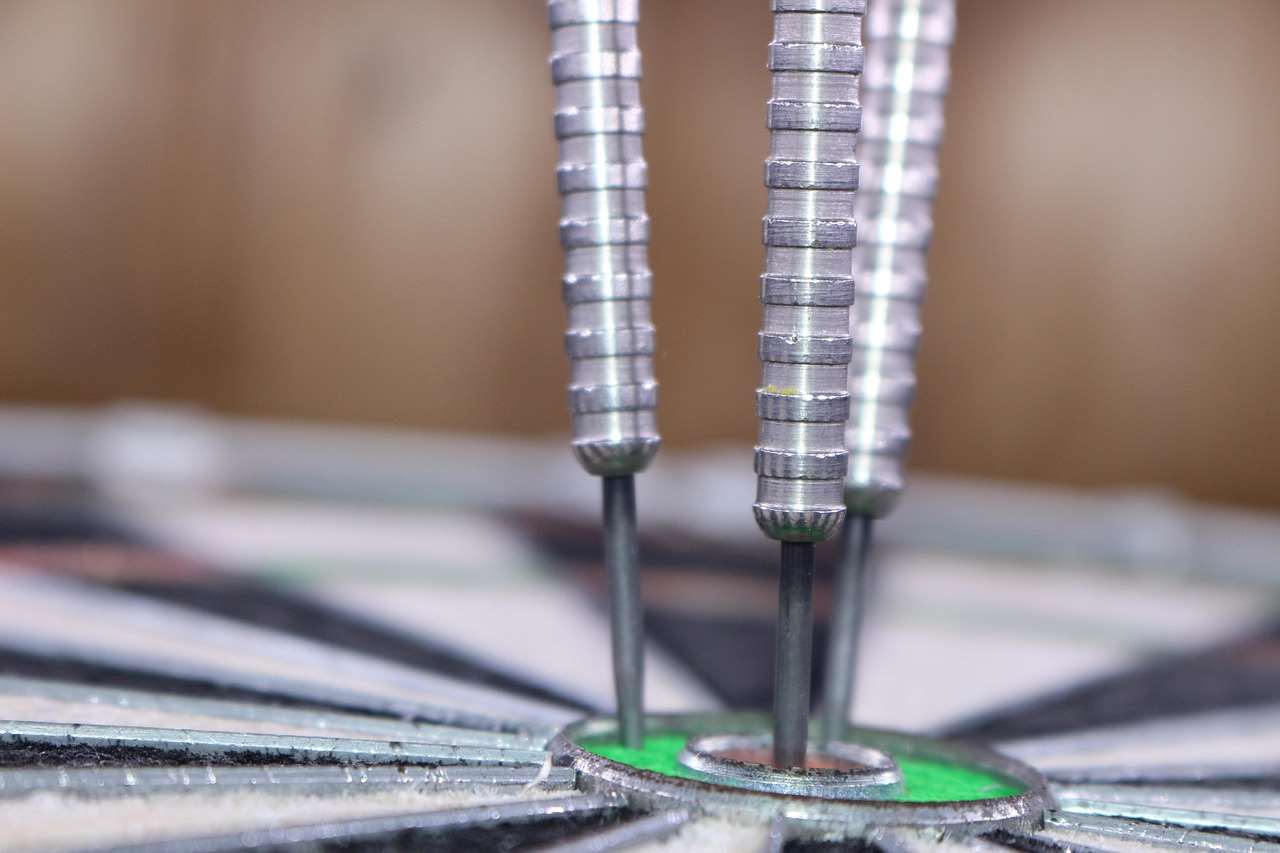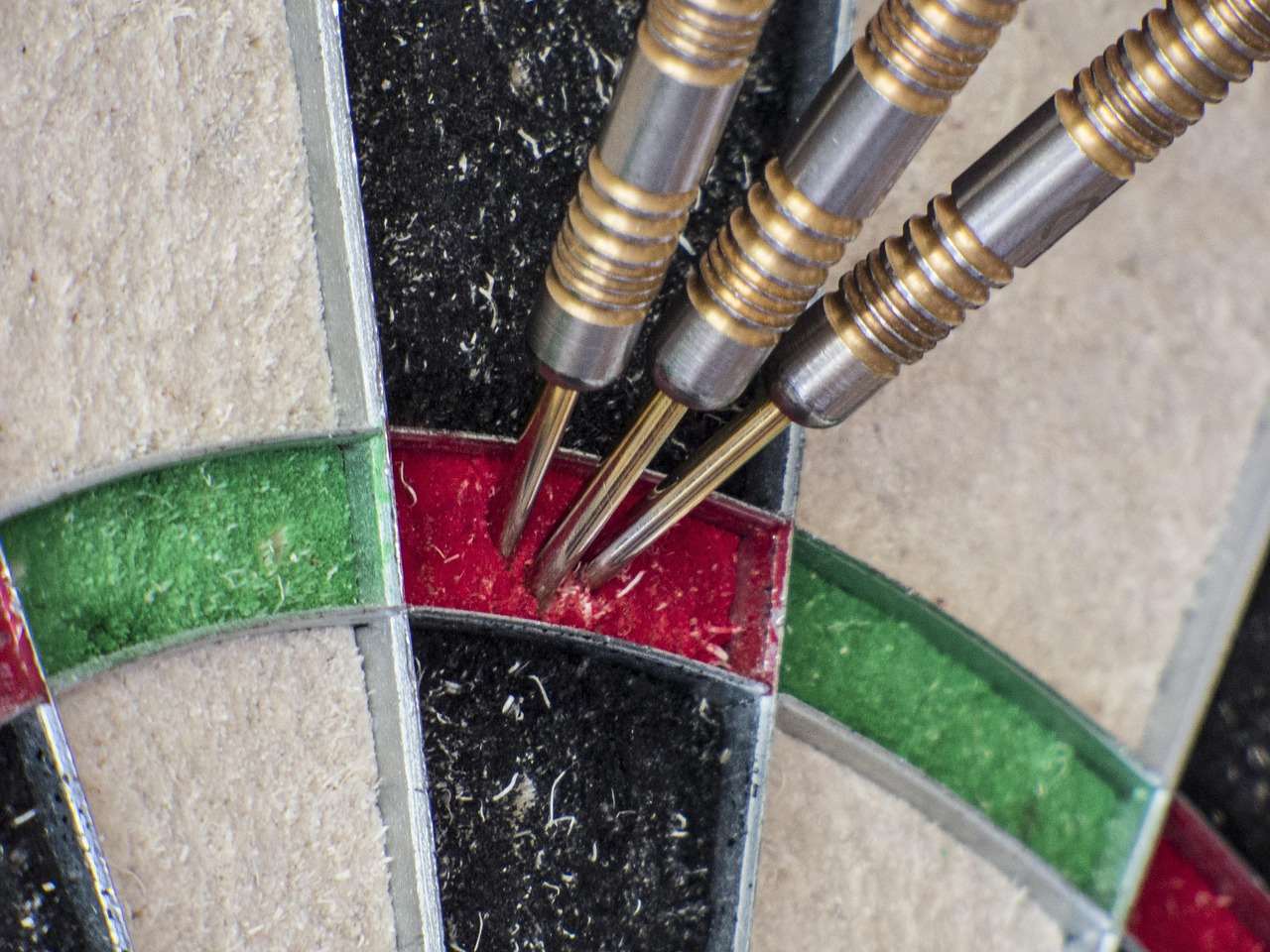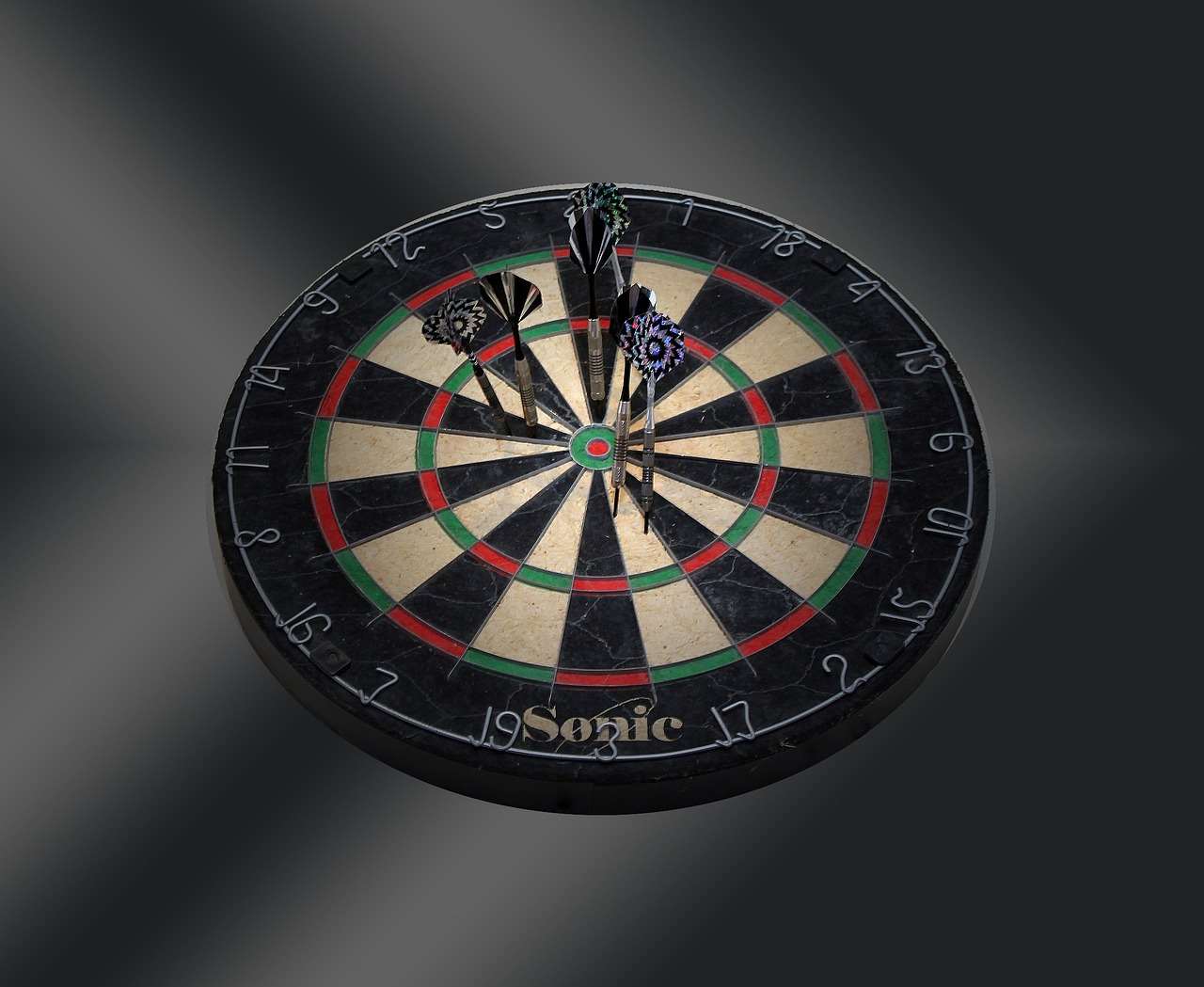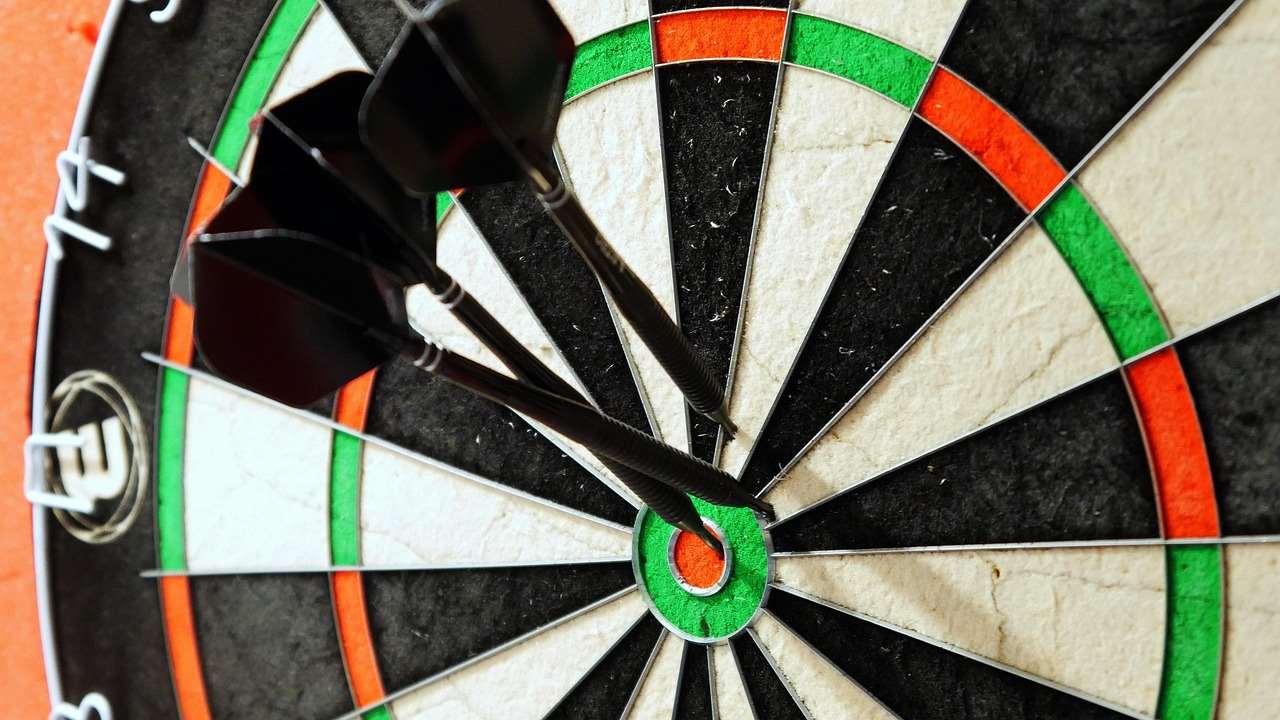Setting up oche line correctly is crucial for fair play and accurate dart throwing. This article provides a step-by-step guide to properly measuring and marking your oche, ensuring consistent gameplay and preventing any disputes. You’ll also learn about regulations, alternative setups, and troubleshooting common issues.
⚠️ Still Using Pen & Paper (or a Chalkboard)?! ⚠️
Step into the future! The Dart Counter App handles all the scoring, suggests checkouts, and tracks your stats automatically. It's easier than you think!
Try the Smart Dart Counter App FREE!Ready for an upgrade? Click above!
The Importance of Correct Oche Placement
The oche, also known as the throwing line or toe line, is the designated spot from which dart players must throw their darts. Its correct placement is paramount for several reasons. First and foremost, it ensures fairness. If the oche is incorrectly positioned, one player may have an unfair advantage over another. Secondly, consistent oche placement allows players to develop a reliable throwing technique. Muscle memory plays a significant role in dart throwing, and a consistent throwing distance is essential for accuracy. Finally, adhering to standard oche measurements ensures that your games are played according to official darts regulations, whether you’re playing casually or in a competitive setting.

Steps for Setting Up Oche Line Correctly
Setting up oche line correctly doesn’t require specialized tools or expertise. By following these simple steps, you can ensure that your oche is perfectly positioned for optimal gameplay:
1. Gather Your Tools
Before you begin, gather the necessary tools:
- A measuring tape or laser distance measurer
- A level
- A pencil or marker
- Painter’s tape or a similar marking material (avoid permanent markers on surfaces that could be damaged)
2. Measure the Distance
The standard distance from the face of the dartboard (the flat surface, not the wall) to the oche is 7 feet 9 1/4 inches (2.37 meters). This measurement is crucial. Ensure you’re measuring from the *front* of the dartboard, not the wall behind it. The oche line itself should be measured from the front of the board – it is important not to include the thickness of the dartboard when taking your measurements.
3. Mark the Oche Position
Use your measuring tape to accurately mark the position of the oche on the floor. It’s helpful to make multiple small marks to ensure accuracy. Ensure these marks create a straight line across the floor.
4. Verify the Level
Use a level to ensure that your marked line is perfectly straight and perpendicular to the line of sight to the dartboard. An uneven oche can subtly affect your throwing stance and accuracy. If you are interested in Basic Darts Fundamentals for Beginners, a stable and fair playing field is the best place to start!
5. Apply the Marking Material
Once you’re satisfied with the position and level of the oche, apply the painter’s tape or your chosen marking material along the marked line. Press it firmly to the floor to ensure it adheres properly. Alternatively, you can use a more permanent solution like a thin strip of wood or metal, but be mindful of potential tripping hazards. You can also paint the oche line, but again ensure you use the right paints for the floor surface.
Alternative Oche Setup Options
While the standard distance of 7 feet 9 1/4 inches is the official measurement, you may encounter situations where adjustments are necessary. For instance, if you’re playing in a smaller room, you might consider a slightly shorter distance, though this could affect your throw and may require you to relearn some of your muscle memory. If you are Adapting darts rules for small spaces: tips and tricks, this might be necessary.
Another option is to use a portable oche. These are typically rubber mats with a raised edge that indicates the throwing line. They are convenient for temporary setups or when playing in different locations. However, always double-check the accuracy of a portable oche’s measurements before relying on it. They are also great for protecting your floor.

Common Mistakes When Setting Up Oche Line Correctly
Even with careful planning, some common mistakes can occur when setting up oche line correctly. Being aware of these potential pitfalls can help you avoid them:
- Incorrect Measurement: The most frequent mistake is measuring the distance incorrectly. Double-check your measurements and use a reliable measuring tool.
- Measuring from the Wall: Always measure from the face of the dartboard, not the wall behind it.
- Uneven Surface: Ensure the floor is level where you’re placing the oche. An uneven surface can affect your stance and throw.
- Using the Wrong Marking Material: Avoid permanent markers on surfaces that could be damaged. Painter’s tape is a safe and easily removable option.
- Ignoring Official Regulations: If you’re playing in a competitive setting, familiarize yourself with the official darts regulations regarding oche placement.
Troubleshooting Oche Issues
Even after careful setup, you might encounter issues with your oche. Here are some troubleshooting tips:
- The tape keeps peeling off: Clean the floor thoroughly before applying the tape. Use a high-quality painter’s tape designed for floors.
- The oche feels too far or too close: Double-check your measurements and ensure they comply with official regulations. If you’re consistently throwing poorly, consider making *small* adjustments to the oche position, but be mindful of consistency.
- The oche is a tripping hazard: If you’re using a raised oche, ensure it’s clearly visible and well-secured to the floor. Consider using a ramped edge to minimize the risk of tripping.
The Benefits of a Well-Placed Oche
Taking the time to ensure your oche is set up correctly offers numerous benefits. It promotes fair play, allowing all players to compete on an equal footing. It enhances accuracy by providing a consistent throwing distance. It also fosters a more professional and enjoyable dart-playing experience, whether you’re playing casually or in a competitive environment. If you are Modifying rules for mixed-level dart players, it is important to ensure all players are at an advantage.

Advanced Oche Considerations
For serious dart players, there are some advanced considerations regarding oche setup. These include:
Oche Materials
While tape is sufficient for casual play, more durable options exist for regular use. These include wooden strips, metal bars, or even recessed oches built into the floor. The choice of material depends on your budget, skill level, and the frequency with which you play darts.
Adjustable Oches
Some advanced players use adjustable oches, which allow them to fine-tune the throwing distance to suit their individual style. These are particularly useful for players who experiment with different stances and throwing techniques.
Lighting Considerations
Ensure that the oche area is well-lit. Poor lighting can affect your vision and throwing accuracy. Consider installing additional lighting fixtures specifically for the oche area.
Why Consistency Matters: Developing Your Throw
The oche isn’t just a line; it’s a critical component in developing a consistent and accurate throw. A correctly positioned oche ensures that you’re always throwing from the same distance, allowing you to develop muscle memory and refine your technique. Over time, your body will learn the precise movements required to hit your target, and you’ll be able to throw with greater accuracy and confidence. In conjunction with the correct setup for the oche line, it is important to focus on other fundamental aspects such as correct stance and grip. If you are new to the game, you can look into Adapting darts rules for beginners, that can help to make darts easier to understand.

Regulations and Official Oche Measurements
If you’re planning to participate in organized darts competitions, it’s essential to be aware of the official regulations regarding oche measurements. These regulations are typically set by governing bodies such as the Professional Darts Corporation (PDC) and the British Darts Organisation (BDO). Adhering to these regulations ensures that your games are played according to the official standards. Always consult the specific rules of the competition you’re participating in.
Measuring Oche Height
While the horizontal distance is primary, some organizations also specify the height of the oche. This is measured from the floor to the top of the raised oche (if applicable). Ensure that your oche meets the height requirements of your chosen league or tournament. Often, it is acceptable for the oche to be flat to the floor, so there is no height.
The Psychological Impact of Oche Placement
Believe it or not, the oche’s position can even have a subtle psychological impact. A slightly off-kilter oche can create a sense of unease, affecting your focus and concentration. Conversely, a perfectly positioned oche can instill confidence and promote a sense of control. Ensuring that your oche is properly aligned can contribute to a more positive and successful dart-playing experience.

Maintaining Your Oche
Once you’ve set up oche line correctly, it’s important to maintain it properly. Regularly check the position and condition of the marking material. Replace the tape or re-paint the line as needed to ensure it remains clearly visible and accurately positioned. Periodic maintenance will help to prolong the lifespan of your oche and ensure consistent gameplay. For instance, using a vacuum cleaner to keep the area free from debris is crucial for maintaining visibility and preventing slips.
Conclusion
Setting up oche line correctly is a fundamental aspect of playing darts. By following the steps outlined in this article, you can ensure that your oche is accurately positioned, promoting fair play, enhancing accuracy, and fostering a more enjoyable dart-playing experience. Whether you’re a casual player or a serious competitor, taking the time to set up your oche correctly is an investment that will pay off in the long run. Now that you’re equipped with the knowledge to create the perfect throwing line, grab your darts and aim for that bullseye! Ready to take your game to the next level? Explore our range of dartboards and accessories today!
Hi, I’m Dieter, and I created Dartcounter (Dartcounterapp.com). My motivation wasn’t being a darts expert – quite the opposite! When I first started playing, I loved the game but found keeping accurate scores and tracking stats difficult and distracting.
I figured I couldn’t be the only one struggling with this. So, I decided to build a solution: an easy-to-use application that everyone, no matter their experience level, could use to manage scoring effortlessly.
My goal for Dartcounter was simple: let the app handle the numbers – the scoring, the averages, the stats, even checkout suggestions – so players could focus purely on their throw and enjoying the game. It began as a way to solve my own beginner’s problem, and I’m thrilled it has grown into a helpful tool for the wider darts community.